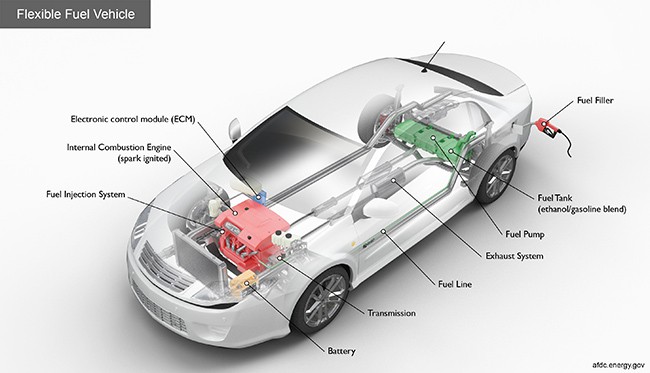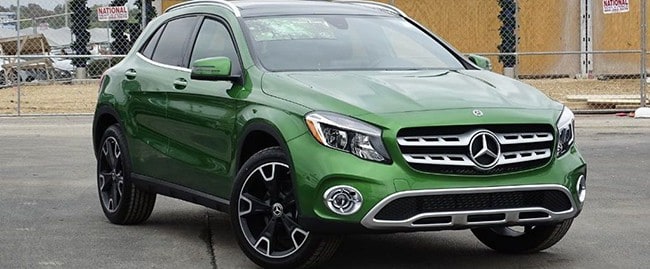What is Flex Fuel and is it a Worth Considering?

You may have heard about flex-fuel vehicles and never really given them much thought, but what is flex fuel, and is it worth considering buying a vehicle with this capability?
What is a flex fuel vehicle?
Flex fuel is an abbreviation of flexible fuel, and according to the Renewable Fuels Association, there are now more than 22 million flex-fuel vehicles (FFVs) on roads in the United States. These vehicles have internal combustion engines that are designed to be run on more than one fuel. Also sometimes referred to as dual-fuel vehicles, they are usually run on gasoline that’s blended with either ethanol or methanol in the same tank.
FFVs need to be clearly distinguished from bi-fuel vehicles, and that’s because although they all run on multiple fuels and are all classed as alternative fuel vehicles in the same way as hybrids, plug-in hybrids, and fuel cells, bi-fuel vehicles store different fuels in separate tanks.
Advantages of flex-fuel vehicles?
Just as different people have different reasons for choosing a hybrid or an EV over a gas-only vehicle, there are different reasons for choosing an FFV. A common reason for wanting an FFV is to reduce the impact your mobility has on the environment.
Ethanol is a much cleaner burning fuel than gasoline, and that means burning it to power an engine puts fewer toxic emissions into the environment. Ethanol is not, therefore, a significant producer of greenhouse gasses, so it could be a good option if you’re environmentally conscious.
As its name suggests, a flexible fuel vehicle is flexible in the way it burns fuel. The vehicle will burn whatever proportion of the mixture is in the combustion chamber, and electronic sensors, microprocessors, and the fuel injection system are used to regulate the blend.
Mixes can vary to deliver different results, so the focus can be balanced between performance and efficiency.
Unlike gasoline, ethanol isn’t derived from crude oil that comes out of the ground. Instead, ethanol is derived from crops like corn and sugar cane, and that makes it a viable alternative to oil that often has to be purchased from abroad. Greater use of ethanol would mean a lower reliance on foreign oil supplies, which can be expensive at times as well as unreliable.
Alternative fuel vehicles are favored by governments and other authorities over gas and diesels these days, and FFVs can offer significant tax benefits. In the US there’s the flex fuel tax credit for example, which replaced the clean-fuel burning deduction and can reduce or even eliminate a taxpayer’s tax obligation for their vehicle.
Disadvantages of flex fuel vehicles
You know the term “give with one hand and take away with the other?” Well, those environmental considerations that can be seen as an advantage of FFVs can also be seen by others as a disadvantage too. While most would agree that making fuel from renewable crops grown by farmers is better for the environment than extracting and burning fossil fuels, growing crops for fuel also has its environmental issues.
Any crops we grow for fuel are crops that are not available for other uses such as for human consumption or for animal feed. In the long run, if we drastically increase the number of crops we grow to produce ethanol for vehicle fuel, it could lead to higher prices or even shortages of food and animal feed.
An over-reliance on something like corn is also a problem as it’s a very labor-intensive crop that can, therefore, be unreliable, especially as it’s prone to drought, bad weather, and even disease.
Ethanol might burn cleaner than gasoline, but it can also absorb dirt easier and this can lead to corrosion and damage to your engine, even though the engine is designed to run on flex fuel.

Despite what many people who do not use flex-fuel might imagine, ethanol isn’t as economical to use as gasoline because it isn’t as efficient as gas. Ethanol obviously isn’t as common as gasoline either, and by that I mean there are not as many manufacturers and therefore not as many places to buy it from.
Although mixing ethanol with gasoline doesn’t improve the efficiency of your fuel, it does raise the octane rating. This is where drivers can make a big saving. You should expect to find E85 at gas stations that supply it being sold at around 12 percent less than standard gasoline. E85 is called that because it’s a fuel made up of 85% ethanol and 15% gasoline.
So, if gas is being sold at $2.90 per gallon you should expect to pay around $2.52 for E85. However, you need to consider what mileage your vehicle is going to get running on E85 compared to standard gas. If the E85 mileage is more than 12% worse than standard gas, the only advantages you are going to get are on emissions.
What vehicles run on flex fuel?
There are lots of flex-fuel vehicles available right now, and they include sedans, hatches, SUVs, pickup trucks, and vans, and there are luxury and mass-market models in most segments. If you want a flex-fuel pickup truck you have the Ford F-150, Chevy Silverado, and GMC Sierra, if you want a minivan there’s the Dodge Grand Caravan, FFV SUVs include the Ford Explorer and Mercedes-Benz GLE, and you can even get a Dodge Charger that runs on E85.
Is a flex-fuel vehicle worth considering?
I have to say that I wouldn’t go out of my way to look specifically for a vehicle that runs on flex fuel. The best thing about an FFV is that you have the option to run on E85 or on standard gas, so if you like a vehicle and it happens to be flex-fuel compatible then at least you have the option.
Alternative fuel vehicles are definitely a thing now, and before we know it every new vehicle coming off production lines around the world will be what we’d now call an alternative fuel vehicle. By then though, these alternative fuels will be the norm and not alternative at all.

For me, it would be a better idea to go for a hybrid, plug-in hybrid or an all-electric EV now, and certainly in the future. These vehicles are more efficient, cheaper to run, and better on emissions than an FFV. It may be different if you’re a commercial operator and there are some specific tax benefits to be had with running flex fuel vehicles, but for retail buyers there seem to be much better options available these days.
Even if you have a business and you’re running pickup trucks, bi-fuel models that can run on a combination of gas and CNG or propane are probably a better option than an FFV right now as they are cheaper to run. And as Ram has now introduced mild-hybrid technology to its trucks and Ford even has an all-electric F-150 in the pipeline, I’d probably forget about going for an FFV unless the vehicle you like just happens to be FFV compatible.
Governments might see flex fuel as an immediate solution for cutting vehicle emissions, but it’s hard to see a reason for buyers to get excited about it. Even if environmental considerations are high on your list of priorities for buying your next vehicle, there are better options these days than an FFV.
